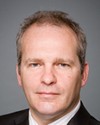Thank you, Mr. Chair.
Thank you to our witnesses.
When I look over these estimates, there are always bigger numbers in them. In our review of them, I think, like Mr. Sopuck indicated, that I'm interested in results and not always the process of things. I just want to highlight a couple of points to you that I think are more congratulatory in nature. I've obviously spent some time travelling around the country and I have a couple of recent examples that I'd like to just bring to your attention.
You know that the results that you're providing and these asks that we're seeing in some of these line items are good investments. I've met with a number of consultative working groups that meet on a regular basis with the Department of Fisheries and Oceans, including members of the hunting and angling advisory panel, and they're very pleased with the work and relationship that they have with the Department of Fisheries and Oceans. I heard that very recently.
They also highlighted to me, which I think is worth passing on, that the educational strategy that has been deployed at the front-line level by officers instead of enforcement response actions has been well grounded. It seems as though their education and discretion in deployment is winning favour in the communities across this country that I've spoken to. I think that's equally important for you to realize because a lot of what you're doing, a lot of what we're asking for in this budget in terms of big numbers, makes a difference to day-to-day Canadians and individuals in this country.
In respect to the coast guard, I had a great opportunity several months ago to board the Laurier with Captain Bill Noon. At that time he was doing a huge school engagement when they returned from the Franklin expedition and had the bell on display. I can tell you right now that the coast guard connecting with Canadians, in particular the youth of our country, is a great way to build those bridges and a great way to invest in the historical contributions that the coast guard is making.
In respect to the investments around the helicopter fleet, there was an interesting anecdotal story there about how the coast guard pilot at the time was engaged in three different activities, one being scientific research and one being a search and rescue mission, on the very same day that they discovered pieces that helped lead us to find the Franklin ship. It shows the diversity and the interoperability of those services and the exchange that the coast guard has with Canadian Forces, particularly in the high Arctic.
I know your investments in small craft harbours are making big differences in Arctic communities. The recreational fisheries partnership fund, with 2,000 linear kilometres of stream habitat restored now, is a wonderful investment. There are great community-based projects with thousands of volunteers, millions of dollars leveraged, great community partners, and smaller contribution agreements like the ones that you sign onto with the salmon subcommittee for the Yukon Fish and Wildlife Management Board to let them do the important work that they need to do across transboundary waters.
I think it's important for us as parliamentarians to thank you and acknowledge the great work that you're doing, which makes a meaningful difference in individual lives and are very much kitchen table discussion items for families in this country.
I want to ask one piece about the Pacific and Atlantic commercial fisheries initiative. I'm just wondering if you can provide some information about detail around first nations participation and maybe some other accomplishments in the program, because I do see line items around aboriginal strategies and governance. I was pleased to be at a fisheries hatchery fully run by first nations communities in Penticton recently. These are great success stories, and if you could just provide a little bit of information on how these main estimates will deliver those programs for Canadians and first nations, it would be wonderful to hear.





